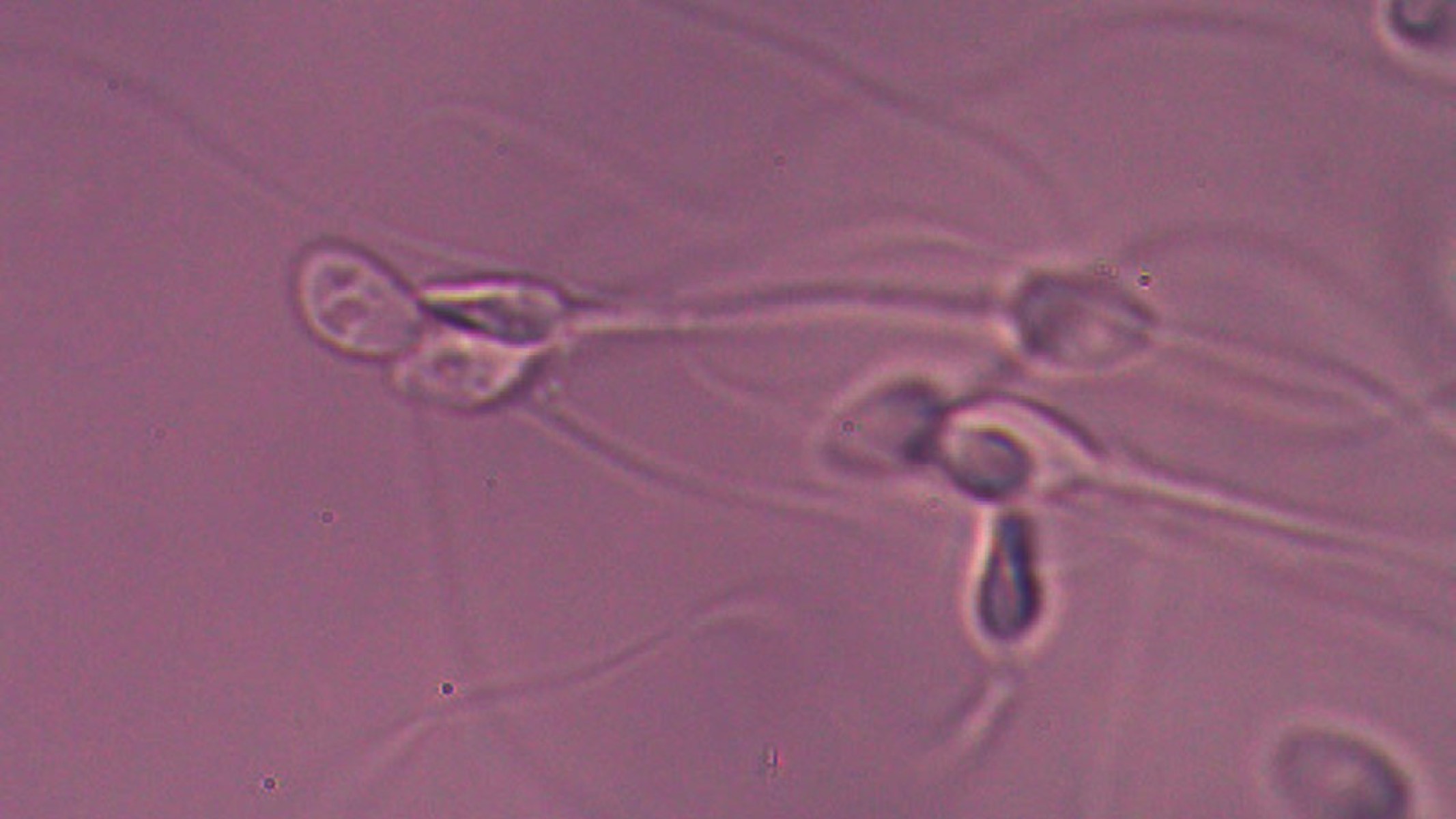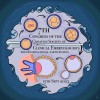
IVF NewsStudy: What happens to abnormally fertilized embryos? A scoping review
Reproductive BioMedicine Online 29 May 2023
Embryos derived from oocytes lacking the typical two pronuclei (2PN), a sign of normal fertilization, show different development potentials, according to a comprehensive review of the literature by James Kemper, Yanhe Liu, Masoud Afnan, Ben Mol & Dean Morbeck. The analysis focused on embryos resulting from oocytes with no pronuclei (0PN), a single pronucleus (1PN), or three pronuclei (3PN), collectively termed non-2PN oocytes. The study revealed a significant gap in scientific knowledge about these non-standard fertilization outcomes. In a standard In Vitro Fertilization (IVF) procedure, the presence of two pronuclei and two polar bodies in an oocyte signifies a normally fertilized egg. However, a scarcity of research exists on embryos derived from oocytes that do not adhere to this norm. Despite their rarity, these non-2PN oocytes could potentially increase the pool of embryos eligible for transfer, providing hope for couples who lack high-quality embryos. The literature review, which considered 33 eligible articles, found that while non-2PN oocytes occur less frequently, a significant proportion of them stop developing between day 1 and day 6. As a result, they show a reduced chromosome integrity and diminished clinical utility compared to their 2PN counterparts. The review also identified that blastocyst rates were lower in 1PN oocytes (68.3% versus 32.2%), and that larger 1PN oocytes have a better developmental potential compared to smaller ones. Blastocysts from 1PN oocytes appeared to have a slightly reduced implantation potential and a reduced ongoing pregnancy rate when compared to 2PN blastocysts (33.3% versus 35.9%). While 13 of the included studies reported live birth rates, the results varied significantly, with rates ranging from 0 to 66.7%, pointing to a notable heterogeneity in practices. The study underlines the pressing need for additional research to improve understanding and interpretation of non-2PN oocytes. The authors suggest that advancements in technology such as time-lapse imaging and artificial intelligence algorithms could provide valuable insights into the development and potential viability of embryos from non-2PN oocytes. The study's findings challenge the conventional guidelines that only zygotes with two pronuclei are considered diploid, signifying a significant change in perspective and underscoring the complexity and dynamism of human reproduction. Further studies will be required to confirm these findings, but the potential for new advances in this area holds great promise. Source https://www.rbmojournal.com/article/S1472-6483(23)00111-6/fulltext [ Full Article ] Conference: ESHRE 39th Annual Meeting Copenhagen, Denmark 25-28 June 2023
ESHRE 29 May 2023

The European Society of Human Reproduction and Embryology (ESHRE) is gearing up to host its 39th Annual Meeting in Copenhagen, Denmark. Scheduled to take place from June 25th to 28th, 2023, the event promises four days of breakthrough scientific discussions, inspiring speeches, and unparalleled networking opportunities. This meeting follows the successful post-lockdown convention held in Milan in 2022. Copenhagen, acclaimed for its natural beauty and friendly atmosphere, has been chosen as this year's venue. The event will take place at the Bella Centre, which is conveniently located near the city's award-winning metro system and the airport. Copenhagen, known for its extensive bike paths and cycle-friendly infrastructure, offers visitors alternative modes of transport, such as bicycle rentals. Visitors staying beyond the event duration can explore Copenhagen's world-class dining, pristine beaches, and vibrant cultural scene. The city boasts renowned establishments like the Tivoli Gardens and numerous venues for outdoor concerts. Join the world's leading scientists and thought leaders at ESHRE 2023 in Copenhagen, an event that's certain to further the advancement of human reproduction and embryology. https://www.eshre.eu/ESHRE2023 [ Full Article ] Webinar: 80s Famous (Part 1)
International IVF Initiative 26 May 2023

Session 118: 80s Famous (Part 1) Tuesday, 30th May (3 pm EST / 8 pm UK / 9 pm CET) [ Full Article ] I3 Revisited: Cytoplasmic transplantation in the 1990s - Are the kids alright?
International IVF Initiative 24 May 2023

 In light of recent developments concerning cytoplasmic transfer in the UK , we're taking another look at this I3 lecture. This talk was included in "SESSION 44: REBOOT - CYTOPLASMIC MANIPULATION FOR IVF FAILURE." The complete session can be viewed at this link.
This video is one of many educational resources produced by the International IVF Initiative (I3). As a worldwide movement, I3 focuses on improving education and refining methods in assisted reproductive technologies. To explore a wider range of educational content, we invite you to visit https://ivfmeeting.com. [ Full Article ] Webinar: ZYMOT FERTILITY SYMPOSIA
International IVF Initiative 21 May 2023

Tuesday, 23rd May (3 pm EDT / 8 pm UK / 9 pm CET)
[ Full Article ] News: Male GPs Show Reluctance in Referring Patients for IVF, Says Report
IVF.net Newsdesk 20 May 2023
Research conducted by the Progress Educational Trust (PET), a fertility charity, has raised concerns about access to NHS-funded IVF treatment. The study suggests that male GPs are less likely to refer eligible patients for IVF, leading to disparity in access to fertility treatments. GPs play a pivotal role in the fertility treatment journey, as they typically make the initial referral to fertility clinics. PET’s report indicates that there's a significant confusion and lack of understanding among GPs regarding the eligibility criteria for NHS-funded fertility treatment, contributing to the existing IVF 'postcode lottery'. The study is based on a survey of 200 GPs and commissioners across England, focusing on the knowledge of national fertility guidelines and referral decision criteria. It reveals that GPs’ referral decisions, particularly male GPs, are often influenced by their age and gender. In cases where infertility is already established—a condition that automatically qualifies for treatment under National Institute for Health and Care Excellence (NICE) guidelines—52% of male GPs versus 73% of female GPs would refer patients for treatment. Similarly, 57% of male GPs would refer patients who had been trying to conceive for a year, compared to 66% of female GPs. Younger and less experienced GPs were found to be more likely to refer patients for IVF treatment. It's worth noting that NICE's fertility guidelines, which are currently under review, have not been updated for the past 20 years. They recommend that women under 40 should be offered up to three full cycles of IVF on the NHS if they or their partner are infertile. However, the day-to-day decisions of GPs are bound by local criteria set by commissioning groups, and only about 10% of areas meet the NICE guidelines. Many regions offer only one funded IVF cycle. Another finding from the survey revealed a widespread misunderstanding about the defined endpoint of an IVF cycle. Only 16% of GPs correctly identified that a cycle ends "when all viable embryos are transferred", according to the NICE guideline. PET's research is a call to arms for the government, NHS England, and commissioning bodies. It stresses that lack of clarity and misunderstanding among GPs regarding the NICE guideline worsen the IVF 'postcode lottery'. Over the past two years, referral criteria have become increasingly restrictive, with 54% of GPs noticing this change. The study's findings also underscore the emotional toll fertility issues take on patients, with nearly 75% of GPs having received complaints about access to fertility treatment. The report concludes by emphasizing the need for a nationwide review of IVF referral policies and guidelines to ensure fair access to fertility treatment across the country. The regional variation in eligibility criteria, or the 'postcode lottery', is a stark issue that requires immediate attention. [ Full Article ] Conference: 7th Congress of the Croatian Society of Clinical Embryologists
Dejan Ljiljak, president of the Society 16 May 2023

Dear colleagues and friends, Every two years, the Croatian Society of Clinical Embryologists summarizes new knowledge and trends in clinical embryology and human reproduction. One of our aims is to constantly review and talk about news in our field of interest. This year, we bring you great lecturers with new topics. So, it is our great honour and privilege to invite you to our 7th Congress meeting! Sincerely from us, and we hope to see you in Opatija! On behalf of the Organizational committee, Dejan Ljiljak, President of the Society [ Full Article ] Article: The International IVF Initiative: A Leap Forward for Embryologists and Reproductive Scientists
International IVF Initiative 13 May 2023

The International IVF Initiative (I3) is a global movement that aims to enhance education and optimize practices in assisted reproductive technologies. Since the onset of the global pandemic, this initiative has played a pivotal role in reshaping the landscape of reproductive medicine, specifically for embryologists and reproductive scientists. A Global Initiative for Reproductive Medicine The International IVF Initiative, founded by Jacques Cohen, Zsolt Peter Nagy, and Thomas Elliott, was designed to bridge the knowledge gap in assisted reproductive technology. It now boasts a dedicated team that includes executive director Giles Palmer and MaryAnn Szvetecz, as well as a group of committed volunteers. The I3 Initiative provides a platform where experts worldwide converge to exchange knowledge, experiences, and best practices. This initiative fosters a community dedicated to improving assisted reproductive procedures by promoting collaboration and communication among professionals in the field. A Hub of Knowledge for Embryologists Embryologists, who handle and manipulate the most critical components of the process - the eggs and embryos - play a crucial role in assisted reproductive technology. The International IVF Initiative provides a plethora of resources for embryologists, including webinars and workshops for knowledge exchange. It empowers embryologists by not only providing valuable information but also creating avenues for them to share their research and experiences. The initiative focuses on topics of utmost importance to embryologists, such as embryo grading, vitrification, and the latest technologies in embryo culture. It upholds standards of excellence in embryology and continually advocates for advancements and improvements in the field. A Catalyst for Reproductive Scientists The International IVF Initiative goes beyond the practice of assisted reproductive technology; it delves into the science that underpins it. Reproductive scientists involved in the initiative have the opportunity to deepen their understanding of fertility, conception, and embryonic development mechanisms. The initiative supports research in the field, spurring scientists to explore new frontiers in reproductive medicine. It provides a platform for scientists to present their findings, discuss their implications, and collaborate on further research. Additionally, it keeps the scientific community informed about the latest research and developments in the field. Impact of the Initiative "The International IVF Initiative has made a significant impact on the field of reproductive medicine. It has fostered a sense of community among professionals, facilitating the free exchange of ideas and experiences. The initiative has played a crucial role in standardizing practices and promoting excellence in the field. Moreover, it has stimulated research and innovation, leading to advancements in assisted reproductive technology. These advancements have not only improved the success rates of procedures like IVF but also have enhanced our understanding of human reproduction,” stated Giles Palmer, the executive director. The Future of the International IVF Initiative The International IVF Initiative continues to grow and adapt in line with advancements in reproductive medicine. It remains steadfast in its commitment to enhancing the practice of assisted reproductive technology and promoting research in the field. Looking ahead, the initiative plans to augment its offerings by providing more resources for professionals in the field. It also aims to fortify its global community by encouraging increased collaboration and exchange among embryologists and reproductive scientists worldwide. The International IVF Initiative stands as a testament to the power of collaboration and knowledge exchange. It serves as a beacon for embryologists and reproductive scientists, guiding them towards excellence in their practice and research. As the field of reproductive medicine continues to evolve, the initiative is poised to support its growth, driving the advancements that will shape the future of assisted reproduction.
The International IVF Initiative is a completely free resource for all its users, made possible by the generous sponsorship from industry benefactors committed to advancing the field of reproductive medicine. [ Full Article ] Study: Preventing Preeclampsia in IVF pregnancies
Dr.DPankar Banerji 12 May 2023
Can We prevent Preeclampsia
What are the novel findings of this work Preeclampsia and pregnancy induced hypertension is one the major cause of maternal mortality and morbidity. There is continuous effort to identify the cases in early pregnancy or even identifying risk factor in early pregnancy to start anti inflammatory drug esp.Low dose aspirin. Even after this there are major chunk of pregnant patient who suffer from moderate to severe hypertension and HELLP syndrome and even eclampsia. Intra uterine growth retardation is one of major problem for fetal mortality and morbidity along with complications of prematurity. What are the clinical implication of this work This work is with large data with an intervention prior to pregnancy contemplation. All the pregnancies are followed till delivery. Large number are with high risk factor for development of preeclampsia. There were no pregnancy induced hypertension or preeclampsia in this large group. So intervention in early or before pregnancy may eliminate this menace and help to reduce this major problem in society and improve maternal and fetal survival to a great extent Abstract : Objective : To reduce the stress on cellular hyperplasia happening at the time of implantation and early part of pregnancy with spiral artery remodeling , so that there is minimal release of inflammatory factors in maternal circulation. This reduction of cellular stress is postulated by providing adequate supply of energy by way of maintaining the stored form of iron, that is serum Ferritin. This way serum iron can be maintained and thus the level of hemoglobin. Method : This was a retrospective cohort study. It started mainly to prevent early pregnancy anemia. This study conducted at Ideal Fertility IVF and Genetic Centre private limited Jabalpur India. Total 335 pregnant patients are followed ( IVF 304 and spontaneous 31) from January 2020 to December 2022. It was observed that when serum ferritin was below 41 ng/ml, injection Ferric Carboxymaltose 1000 mg was infused in 300 ml of normal saline in 20 minutes ( to improve stored form of iron). It was observed retrospectively that even though majority of pregnancies are IVF pregnancies ( which is high risk factor for pregnancy induced hypertension), not a single woman developed hypertension and its complication. Results : In total, 335 patents are followed. Blood pressure was measured at each antenatal checkup and recorded. Upper limit for defining the hypertension was 140/90 mmhg. All the patients were below this limit and had healthy delivery Conclusion: This study and observation demonstrate that, correcting serum ferritin level before or at the beginning of pregnancy not only reduced anemia but significantly reduces incidence of pregnancy induced hypertension and preeclampsia. It also reduced the incidence of Fetal Growth Retardation. This study can be corroborated by other methods of supplying iron before or early part of pregnancy. Correcting serum ferritin before pregnancy or early part of pregnancy at larger scale may reduce the burden of pregnancy induced hypertension and pre-eclampsia and eclampsia, which is major cause of maternal mortality in India and the whole world. [ Full Article ] Article: In Our Hands: Embryologists as Guardians of Life & The Necessity of Redundancy
Thomas Elliott 11 May 2023
Thomas Elliott is an Embryologist and inventor of CryoSentinel, the Thermographic Monitoring System for Cryogeninc Storage. As embryologists, we are not mere laboratory professionals; rather, we serve as guardians, safeguarding the early stages of life. We care for cells that embody the dreams and aspirations of countless families. However, like any field, ours is not immune to unexpected events. Consider the recent, unimaginable instance of air traffic control malfunction in the United States, which led to the cancellation of over 1,300 flights and delays for almost 10,000 others. This event took place on January 10th, 2023, due to a failure of the Notice to Air Missions (NOTAM) system, a critical component in ensuring flight safety and smooth operations. Just a single point of failure in this system was responsible for the nation-wide disruptions. This event underscores the potential hazards associated with the absence of backup systems and provides us with an impactful lesson. As custodians of irreplaceable reproductive cells, we are duty-bound to provide our patients with the highest quality care, which includes implementing robust, redundant systems to guard against such scenarios. Building Redundancy: The Backbone of IVF Labs Redundancy is crucial to the safety and success of IVF labs. It permeates various aspects of the lab, including:
Cryostorage: A Redundancy Imperative Redundancy serves as a crucial safeguard in the preservation and monitoring of reproductive materials. Sperm, eggs, and embryos are preserved in liquid nitrogen cryostorage tanks at extremely low temperatures to prevent degradation and maintain viability. The cryogenic temperatures are upheld by a simple vacuum, a failure of which could lead to disastrous consequences. Thus, redundancy in monitoring and maintenance systems is paramount to prevent such failures and ensure the continued integrity of these precious biological assets. Monitoring Systems: Our Technological Sentry Even the most sophisticated monitoring systems in IVF labs can possess a single point of failure, potentially rendering them useless. Potential failure points for cryogenic storage monitoring systems include:
Response Time: A Critical Countdown The monitoring methods employed in our work deliver varying response times. To illustrate, in a 47L Dewar, the time span between alerts and critical glass temperature can range from a comfortable 20 hours (Thermographic monitoring) to a scant 1 hour, as with traditional monitoring systems, potentially leaving insufficient time to reach the lab and salvage samples (Pomeroy, et al. 2019. J Assist Reprod Genet. 2019 Nov;36(11):2271-2278. doi: 10.1007/s10815-019-01597-5.Epub 2019 Oct 24. | THERMOGRAPHIC IMAGING: A BREAKTHROUGH INVENTION PROVIDING AN EFFECTIVE AND RELIABLE CRYOGENIC STORAGE MONITORING. Dr. Zsolt Peter Nagy ). Redundancy: Raising the Bar To circumvent these risks, additional redundant systems can be implemented. These systems, utilizing alternative methods for monitoring and alerting users in the event of a potential issue, can sometimes detect failures even earlier due to their distinct monitoring approach. Choosing Your Monitoring System: Striking a Balance When considering additional monitoring, several factors must be weighed. Typically, hard-wired systems are less susceptible to interference or signal loss compared to their wireless counterparts, which are more cost-effective and easier to install. However, one must also factor in potential failure points that might arise during natural disasters or human-induced catastrophes, such as extreme weather conditions. Currently, liquid nitrogen dewar monitoring systems employ one or more of the following: internal temperature probes, external temperature sensors, liquid nitrogen level sensors, weight sensors, or modern technology such as thermographic monitoring. Each option has its unique set of pros and cons. CryoSentinel: Pioneering Cryostorage Monitoring CryoSentinel is designed with a specific purpose in mind: to provide advanced monitoring for cryogenic storage vacuum failure. By leveraging thermography (also known as thermal imaging, a technique that uses infrared radiation to visualize and measure temperature variations on the surface of an object or in an environment) CryoSentinel will detect even the earliest signs of vacuum degradation, long before catastrophic failure occurs. Its extreme sensitivity allows for early warnings of potential problems, giving users valuable time to prevent fatal loss of irreplaceable materials. When used in combination with standard internal dewar sensors like temperature, weight, or level, CryoSentinel creates a faster, more robust and comprehensive system. This integration allows for a complete understanding of the system's health and enables users to take proactive measures to protect patient cells. CryoSentinel's state-of-the-art thermographic systems offer a faster response time to dewar failure allowing for time to move samples to safety. The visual thermographic representation of the cryo storage, both locally and remotely, provides users with an easy-to-understand view of the system's health and allows for quick identification of vacuum loss. In Summary Our collective understanding of our responsibility is profound. Every day, we manage the earliest stages of potential lives—each one invaluable and irreplaceable. It's essential to remember that our mission transcends mere compliance with minimum standards. It's about striving for excellence. It's about fostering peace of mind—for us as professionals and for the families we serve. As we embrace technology and continually refine our practices, let redundancy be our guiding principle. With safety measures like spare storage tanks and advanced monitoring systems, we can ensure that we are doing everything within our power to protect the precious life we've been entrusted to care for. [ Full Article ] |